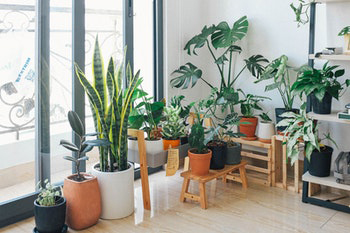Moving the Difficult--What to Move, And What to Leave Behind
 By Julie DeLong, A-1 Freeman Moving Group
By Julie DeLong, A-1 Freeman Moving Group
Most of your household goods and furniture are simple, if not exactly easy, to move. You box up most of it, and, armed with a screwdriver and a couple of other tools, disassemble furniture so it's easy to load. For the DIY types, this can be a fun project--until you get to the things that are a bit more of a challenge--like the piano and the aquarium.
Moving the Difficult
1) Pianos
Pianos are among the most difficult things to move. They are large and awkward, yet in that bulky cabinet lie the extraordinarily delicate mechanisms that literally make the instrument. Have you ever wondered why so many people opt to leave a piano at their old house, or offer it pretty much free to any home? It's because they're so difficult to move.
An upright or spinet might not be worth the effort to move, unless it's sentimental. Baby grand sizes and larger are worth it but need expert help for a successful trip.
Aside from possible damage to the piano itself, there are other opportunities to damage walls, stairways, and anyone attempting to move these beasts. A professional moving company may be able to move your piano but will likely recommend a specialty piano mover to do the job. Many Piano movers will also transport harps, organs, and other large instruments.
2) Artwork and Antiques
Your contact at the moving company will ask about art and antiques, and strongly recommend they pack those items for you. There's a lot of skill involved with packing fragile things for transport, and well worth the cost to ensure your mirrors, art, and other valuables arrive intact.
3) Furniture
There should be a math theory disproving that just because a piece of furniture got into the house, it can come back out. Call it "The Theory of the Pivot". With the “Friends Reunion” just behind us, what better time to remember the episode when they tried to get a sofa through a stairwell. There are a couple of reasons your large furniture is hard to get out.
If it's custom, like an entertainment center or a bar, it probably came into the house in pieces and was assembled in the room. If you can get the carpenter who made the piece to take it apart, that is the best option. Otherwise, talk to your professional movers about disassembling the piece and discuss any difficulty they feel that they might encounter.
Basement furniture is always tough to get out. If you've added a handrail, the passage is even more narrow. Same thing for the stairs--if you've replaced the carpet with hardwood, they're going to be difficult to navigate. Therefore, lots of people just leave that furniture in the house.
That deep freeze you've stashed away down there? It's likely the appliance store delivered it--obviously empty--so you'll have to clean it out before you even try to move it. Or you could just see if the next homeowners would like to it. Some things just are not worth the expense to move.
The Movers Can't Transport My Houseplants & Fish?
No, they can't. Federal regulations prohibit commercial transport of any living thing--so Goldie the Goldfish must ride with you, wedged in between your peace lily and cactus, but make sure to check state regulations first if you are crossing state lines.
Aquariums
Depending on the timing and duration of your move, the best thing to do with your aquarium may be to find a new home for it. However, if you're going to try to move the fish, make sure you do the following.
- Empty the tank of most water, leaving enough for the existing bacteria colony to survive the trip.
- Fill containers with the tank water and put the fish in these containers.
- Stabilize them as much as possible--put the containers in a bin that goes on the floor of the backseat.
- Set up the new tank right away. Float the containers in the tank so the fish get used to the new temperature before you release them.
If your aquarium is investment-grade, check with your fish dealer to see if they can arrange for the transport of your equipment and fish.
Houseplants
If a long-distance move is on your radar, the best thing to do could be to give your plants to your neighbors and friends, but if you're determined to move them, here's how.
- Repot into plastic containers a few weeks ahead of the move
- Move them in your car, or rent a cargo van if the car's full
- Make sure they don't overheat in transit
- Set the plastic pots in your new home for a few weeks while they acclimate to the new spot
- Seriously reconsider giving them away
So, get to it--start packing. Just remember that some things are best left to a professional mover--or left altogether.
Request a free quote
